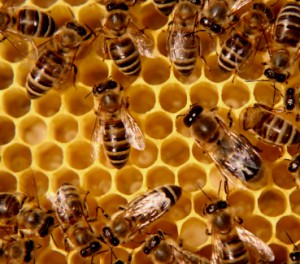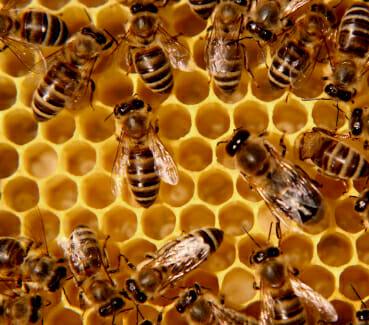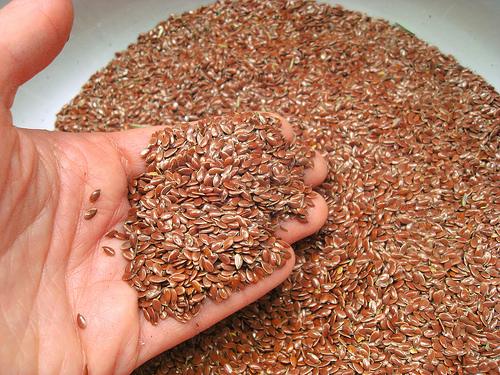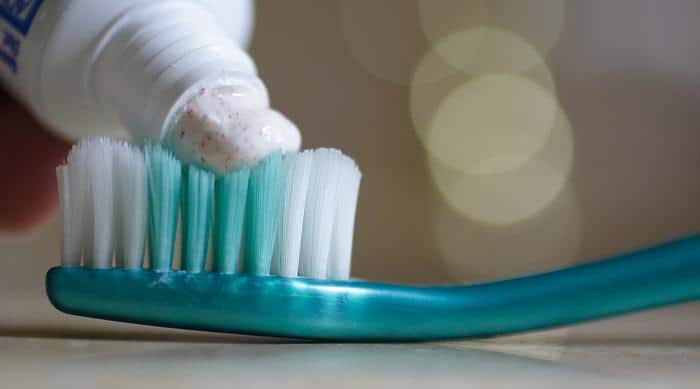Since about 2006, farmers, scientists, beekeepers, and casual observers have noticed sudden declines in bee populations. Beekeepers were seeing at least 30 percent of their bee populations die or disappear each year. Scientists began calling this phenomenon colony collapse disorder, or CCD. It describes the fact that colonies of bees mysteriously, suddenly, and drastically decline. In the years since CCD was first noticed, named, and described, intensive research has been done to find out what is going on with bees. The results have been mixed. Scientists are so far unable to pin the collapse on a single event or cause. Recent research, however, has indicated that commercial pesticides may have an important role to play in the death of bees.
 Why Bees Are So Important
Why Bees Are So Important
According to the Food and Agriculture Organization of the United Nations, there are 100 species of crops that provide the world with 90 percent of its food. Of those 100 crops, 71 are pollinated by bees. Many of the foods we eat, including vegetables, fruits, nuts, fibers, and hay, require insects for pollination. Bees are the main workers when it comes to this task. Pollination occurs when a bee takes pollen from the male parts of one flower and transports it to the female parts on another flower of the same species. This leads to the fertilization in the plant and that plant’s ability to create seeds for the growth of new plants.
Bees have developed such an important role when it comes to pollinating plants because collecting pollen is what they do. Other pollinators tend to accidentally move pollen around when feeding. Bees, however, collect pollen all day long to take back to the hive for honey. As they collect the pollen, they fly from plant-to-plant spreading grains here and there. Furthermore, bees tend to focus on one type of flower at a time, which increases the odds of pollinating.
Colony Collapse Disorder
The first major incident of CCD to be noted and to have devastating effect on crops was in the San Joaquin Valley of California. Almond trees depend upon bees for pollinating. Without the bees, they produce no nuts. The almond growers of the San Joaquin Valley truck in about one million hives worth of bees each year to pollinate their trees. In 2006, there was a massive shortage. The beekeepers that supply almond farmers had lost up to 40 percent of their colonies.
The loss of so many bees is very detrimental to beekeepers who make a living renting out their insects, and also to farmers who need the bees to get a crop. The first signs of CCD were that bees were simply disappearing. They were not dying near the hives, rather flying off and not returning. Presumably they died elsewhere before they could make it back. Another part of the mystery was that certain other insects, such as the wax moth, were avoiding affected hives. These predators would normally attack the hive to steal honey.
After several years of studying CCD, scientists have learned a lot more about bees, but they have yet to pinpoint one single cause for the disorder. Most agree that there are likely several causes. New viruses that are attacking bees have been discovered, such as Israeli Acute Paralysis Virus and Invertebrate Iridescent Virus. A blood-sucking mite has been infesting and weakening bees. Stress from bees being transported in trucks all over the country for pollinating duties is also considered as a possible culprit. Finally, the heavy use of pesticides in commercial farming is also being pointed to as a cause of CCD.
Backyard Beekeepers Everywhere Agree: A Successful Colony Is A Thing Of Beauty…
Pesticides and New Research
Research is ongoing for the causes of CCD. The good news is that the disorder does not seem to have gotten any worse. However, bees are still dying at a rate of about 30 percent per year, and the problem still requires a solution. New research from Purdue University has found conclusively that pesticides are killing bees. Whether this is the main cause of CCD or just one of many is still undetermined. One suggestion is that the pesticides weaken bees and make them more susceptible to other causes of death such as mites and viruses.
The study from Purdue looked at dead bees at several apiaries in Indiana. Analysis of the dead bees showed the presence of neonicotinoid insecticides. Other insecticides, clothiandin and thiamethoxam, were also found in the bees and in pollen gathered by them.
Neonicotinoid insecticides are used to coat the seeds of corn and soybeans before they are planted in the ground. Corn and soybeans were the plants investigated in this study, but neonicotinoid is used on nearly all annual crop seeds. The seeds are sticky after coating with the insecticide, so they are also mixed with talc. This keeps the seeds from sticking in the vacuum systems of the planters. The excess talc gets released during the planting process and also when the machinery is being cleaned. This contaminated talc dust is very light and gets transported throughout the environment.
The talc that is exhausted from planting equipment contains pesticides in quantities that are 700,000 times higher than a lethal dosage for bees. The amounts found in pollen were much less, but still enough to weaken or kill bees if enough of the pollen is consumed. The pesticide compounds can exist in the soil for years, which means that plants can take them up as they grow. The presence of insecticides in the soil, in pollen, and in plants represents a threat to bees, but also to other insects and foragers.
The plants inspected in this study, corn and soybean, do not actually require bees for pollination. However, by studying the impact of the insecticides used on the environment and on bees has put another piece in the puzzle of CCD. In farms where bees are essential for pollination, this evidence of insecticides killing bees is very instructive. The research has also led to a push to improve the planting process. Farmers are now trying to minimize the release of the contaminated talc from the planting equipment.
How You Can Help Bees
The news about bees is grim, but there are things you can do to improve their chances of survival and to encourage the healthy growth of bee colonies.
- Grow your own food. You may already be doing this, but by growing your own food in your garden, you take yourself and your family out of the business of commercial agriculture. Big Ag is poisoning bees, and you should refuse to support it.
- Go organic. If you need to buy some of your food, buy local and organic foods. It’s not easy to grow everything you need to keep your family well fed and healthy. Odds are, even with your best efforts, you need to supplement your diet with foods purchased elsewhere. Support local farmers who do not use pesticides and who do not, therefore, contribute to CCD.
- Be organic. Grow your own vegetables organically. Don’t use insecticides to keep pests at bay. Use organic and natural methods that worked for centuries before synthetic compounds were around. You should be able yield impressive crops with natural methods.
- Find a local beekeeper. Apiary on a small scale is dwindling. Find and visit a beekeeper in your area to learn more about bees. Purchase your honey from this keeper to help support him or her and their local endeavor. And added bonus is that eating honey that is made locally has been shown to improve seasonal allergies.
- Grow bee-friendly plants. Besides your vegetable garden, grow plants that attract bees. This will give them good sources of pesticide-free pollen and will encourage bees to take up residence nearby. Some of their favorites are clover, lavender, yarrow, alfalfa, purple coneflower, bee balm, goldenrod, and thyme. In addition to plants that bees like, you can provide a good place for them to live in your yard. Natural bees use all kinds of things for shelter: dead trees, underground tunnels, and burrows abandoned by other animals. You can purchase bee blocks, blocks of wood with different sized holes in them, to put in your yard as an appropriate bee home.
- Let some of your vegetables bolt. If you have enough plants, let one or two of each type of vegetable in your garden bolt. When they seed in the fall, it will give bees a chance to stock up on food for the winter. With enough food, they have a better chance of waking up and rebounding in the spring.










